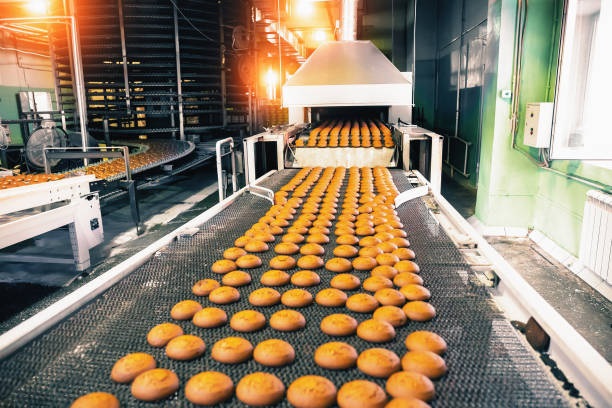Safety lapses that happen in the workplace lead to injuries and lost work days, not just for people working, but also for their families. Those who are injured as a result of a safety lapse often speak about how it was their fault because they didn’t take action quickly enough. This is why an overview of the different types of heat-resistant belts may be significant during any given industrial process has been needed.
Table of Contents
ToggleA Heat Resistant Belt, What is it?

Heat-resistant belts are often used as safety equipment for a variety of purposes, such as construction and dangerous industry. The benefits include improved worker safety, reduced downtime, and increased productivity. Heat-resistant belt technology is also being used in a growing number of other industries including healthcare and manufacturing.
The main benefit of using heat-resistant belt technology is the enhancement of worker safety. By providing a barrier between the wearer and intense heat, it prevents injuries from occurring. Additionally, if there is a fire, the heatproof belt will help to protect the wearer by reducing the chances of severe burns. In some cases, even when there is a fire, the belt will prevent critical internal damage due to heat exposure.
” By providing a barrier between the wearer and intense heat, it prevents injuries from occurring .”
A second benefit of using heat-resistant conveyor belts is the reduction in downtime. This can be caused by numerous factors such as an accident on site or overheating in machinery. With less time lost, businesses can continue operations more efficiently and cost-effectively.
” With less time lost, businesses can continue operations more efficiently and cost-effectively.”
How to maintain the belt and prevent it from getting damaged
There are a lot of benefits to using a heat-resistant belt. Not only will it help you stay safe and healthy, but it can also prolong the life of your equipment. Here are five things to keep in mind when using a heat-resistant belt:
1. Always inspect the belt for damage regularly. If it shows signs of wear or tear, replace it as soon as possible. Remember that even if the belt appears to be in good condition, it may not handle high temperatures very well.
2. Avoid storing your equipment near open flames or other sources of intense heat. This is especially important if you use a gas-fired furnace or barbecue grill occasionally.
3. When using your equipment, make sure that the belt is properly seated around your waist and fastened securely enough so that it won’t come loose during use.
4. Use caution when operating machinery that has been treated with a heat-resistant belting system – always follow the manufacturer’s instructions carefully! Concentrated areas of heat can easily cause damage to the belt and its components.
5. Finally, be sure to clean all surfaces where contact with the equipment has occurred regularly – this includes both the belt itself and any surfaces that have come into contact with oil, grease, or other contaminants left on the belt by previous users.
Some general things that you need to know about the heat-resistant belt
A heat-resistant belt is seen as one of the most important pieces of personal safety equipment that a person can own. This is because when it comes to severe accidents and injuries, a heat-resistant belt can vastly reduce the chances of sustaining any serious injuries. When you’re wearing a heat-resistant belt, even if you are caught in an accident and are thrown onto a hot surface, you’ll be less likely to sustain any major skin burns or other injuries due to exposure to intense heat.
There are several different things that you need to know about using a heat-resistant belt- whether you’re purchasing your own and using it as part of your everyday safety gear, or if you’re someone who is being assisted in getting fitted for one. First and foremost, make sure that the belt fits correctly around your thighs- it should fit snugly but not too tight to impair your motions. You’ll also want to make sure that the fabric allows plenty of air circulation so that you don’t get too sweaty or oppressive during use. Additionally, ensure that the belt has reflective materials built into it so that drivers and others on the road will be able to see you even in low light conditions.
Finally, keep in mind that even if you do wear a heat-resistant belt every day- whether during work or recreational activities- accidents can still happen. Make sure to stay aware of your surroundings at all times and always exercise caution when engaging in risky activities. If you do sustain an injury in an accident, be sure to contact a personal injury attorney to discuss your legal options.
How to use the Heat Resistant Belt
The Heat Resistant Belt is a great way to stay safe from the dangers of heat. This article will teach you how to use it and keep you safe.
This belt is made from high-quality materials that make it resistant to temperatures over 300 degrees Fahrenheit. This belt can be used in several ways, including as a safety precaution for working in hot environments or during outdoor activities where extreme weather conditions are present.
When using this belt, be sure to read the instructions carefully. It is also important to note that this belt should only be worn when necessary and should never be used as a regular fashion accessory.
Alternatives to using a Heat Resistant Belt
Heat-resistant belts are a popular alternative to using a heat warning belt. They can help protect individuals from the harmful effects of extreme heat and can keep them safe during hazardous work periods. Heat-resistant belts offer several benefits over other types of safety gear, such as increased comfort and fewer injuries. They are also more effective at preventing heat-related illnesses and fatalities.
One of the main reasons heat-resistant belts are so popular is that they provide a higher level of protection than traditional warning belts. When properly worn, they can help prevent fatalities from heat-related injuries by up to 90%. Additionally, because they are made from non-flammable materials, heat-resistant belts do not create any fire hazards.
Another benefit of using a heat-resistant belt is that it decreases the amount of time required to cool down after being exposed to extreme temperatures. This is especially beneficial for those who work in areas with high ambient temperatures. Overall, wearing a heat-resistant belt has many benefits over using a traditional warning belt, including increased safety and comfort.







